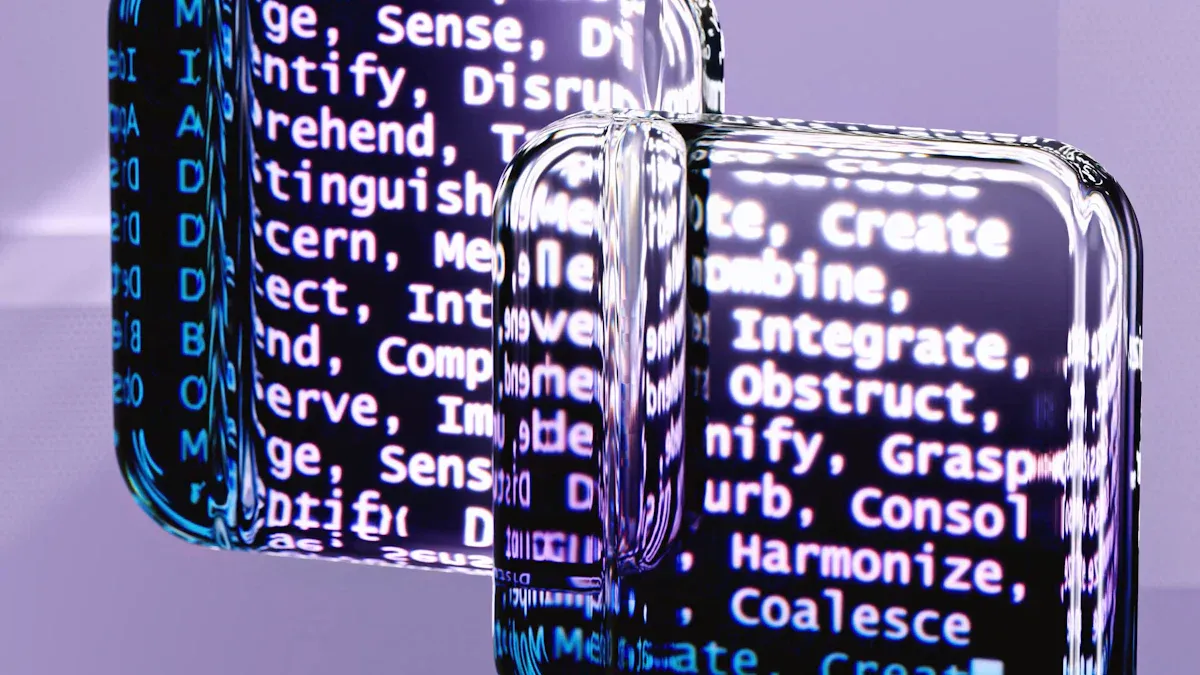What is MCP and How It Transforms AI Integrations

MCP, or Model Communication Protocol, is a set of rules. It helps AI models connect with other systems easily. It fixes problems with old methods by making data sharing smoother. MCP is now key for companies wanting faster and better AI setups.
The results are clear. Companies using MCP save 25% of the time to build AI systems with many models. Clear communication makes work 30% faster, and costs drop by 30%. These changes make MCP very important for healthcare, finance, and business tools.
MCP makes AI connections easier, cuts costs, and speeds up projects—all while helping systems work better together.
Why MCP Matters
Problems with traditional APIs in AI connections
Old APIs make it hard to link AI to tools. They are strict and hard to update. Each connection needs special coding, which takes time and effort. If an API changes, it can break links and cause delays. Fixing these issues costs money and time.
Problem | Explanation |
|---|---|
Strict Design | APIs need custom setups, making them tough to handle. |
Hard to Update | Fixed setups make changes tricky and slow. |
Maintenance Trouble | Small updates can break links, causing big problems. |
These problems show that old APIs don’t work well for today’s flexible AI systems.
How MCP fixes these problems
MCP solves these issues by using a shared communication system. Unlike old APIs, MCP makes linking easier and faster. Instead of many custom setups, MCP uses one simple system. This cuts the work from M×N to M+N, saving time and effort.
MCP also lets AI systems share data both ways. It adjusts to new data sources automatically. Its open design works with many platforms, so you’re not stuck with one vendor. Using MCP can lower costs by 30% and speed up projects by 50%. This makes AI systems more creative and easier to improve.
Why MCP is great for AI systems
MCP has many benefits that make it perfect for AI:
Better Connections: MCP helps AI tools work smoothly with others.
Saves Money: It cuts costs and saves workers’ time by 40%.
Grows Easily: MCP’s design makes adding new AI tools simple.
Boosts Innovation: Its open system helps teams create better AI ideas.
Big companies like OpenAI use MCP because it’s powerful. MCP makes AI connections simple, helping you do more and get better results.
How MCP Works

MCP architecture overview
MCP, or Model Context Protocol, is built to make AI systems better. It uses JSON-RPC 2.0, which helps secure and track communication between systems. This setup allows features like tracking progress, fixing errors, and canceling tasks. These features make MCP reliable for connecting AI systems.
Figure 1: The diagram shows how MCP’s parts work together. MCP’s design creates a strong and flexible system for multi-cloud use.
MCP uses a client-server model to split tasks. Clients send requests, and servers handle them and send back results. This setup makes communication easier and safer between AI tools and other systems.
Key components: servers, clients, and workflows
MCP works well because of three main parts: servers, clients, and workflows.
MCP Clients: These connect systems, check security, and send messages to servers.
MCP Servers: These small programs handle requests, find data, and reply to clients.
Workflows: These improve tasks by adding useful data to AI answers.
Component | Description |
|---|---|
MCP Clients | Connect systems and ensure secure communication. |
MCP Servers | Process requests and provide tools for AI tasks. |
Workflows | Add important data to make AI tasks better. |
For instance, MCP can study a local CSV file using an MCP server. It can also mix this data with live info from a Postgres server, creating a smooth process.
How MCP facilitates AI integrations
MCP makes connecting AI systems easier by reducing setup work. Old methods need custom setups for each link, but MCP uses one system. This cuts the work from M×N links to M+N, saving time and energy.
MCP also allows two-way communication, so AI systems can share data easily. Its open design works with many platforms, so you’re not stuck with one provider. MCP helps create faster, simpler, and more flexible workflows.
MCP’s ability to link layered systems makes it great for complex AI tasks. Any system can act as both a client and a server, opening up new possibilities.
MCP vs. APIs
How MCP and traditional APIs are different
MCP and traditional APIs work very differently for AI tasks. Traditional APIs need separate setups for each connection. This takes a lot of time and is not flexible. MCP, on the other hand, uses one simple setup for all connections. This makes work faster and easier. MCP also allows two-way communication in real-time. Traditional APIs only work one way, using request and response.
Feature | MCP | Traditional API |
|---|---|---|
Integration Effort | One simple setup | Separate setup for each API |
Real-Time Communication | ✅ Yes | ❌ No |
Dynamic Discovery | ✅ Yes | ❌ No |
Scalability | Easy to expand | Needs extra setups |
Security & Control | Same for all tools | Changes with each API |
MCP also helps AI systems find and use tools without setup. This makes MCP better for modern AI systems that need to grow and change.
Why MCP is better for AI tasks
MCP has many benefits that make it great for AI. First, it connects many tools with just one setup. This saves time and effort when fixing or updating systems. Second, MCP allows two-way communication in real-time. This helps AI systems share data quickly and work better.
MCP also makes it easy to grow your system. You can add new tools or expand without big changes. It adjusts to new data sources automatically. MCP also keeps security the same across all tools, making it safer to use.
MCP makes work faster and easier by improving AI connections.
When to pick MCP instead of APIs
Choose MCP if your AI project needs to be flexible and grow easily. MCP is best when you need real-time communication and tools that can adjust to new data. For example, if your AI system works with many tools or changing data, MCP is the right choice.
But traditional APIs can still work for simple, controlled tasks. If your project needs strict and predictable setups, APIs might be better. For example, APIs are good for tasks that need specific, detailed controls.
Think about what your project needs to decide if MCP or APIs are better for you.
Use Cases of MCP in AI Integrations

AI-powered tools and applications
MCP helps create smarter AI tools for many industries. It makes AI systems talk to each other easily, improving how they work. For example, in healthcare, MCP helps AI study patient data and suggest treatments. In self-driving cars, it helps AI systems share information to stay safe. Customer service tools also use MCP to give better, more helpful answers.
MCP saves time and boosts efficiency. It cuts development time by 25% and makes systems 30% more efficient. Over 40% of companies now use MCP for AI tools, showing its importance. The table below shows key facts about MCP’s impact:
Metric | Value/Percentage | Insight |
|---|---|---|
Market Growth | MCP is key for growing AI solutions. | |
Efficiency Gains | Up to 30% | Standard rules make AI systems work better. |
Adoption Rate | Over 40% | Many companies are using MCP for AI tools. |
Development Time Reduction | 25% | MCP helps build AI systems faster. |

Data analytics and intelligent workflows
MCP changes how data is used by AI. It gives AI models easy and secure access to data. This helps AI systems work together and make decisions faster. MCP also reduces problems caused by scattered data, making AI development smoother.
For smart workflows, MCP connects AI with other tools to automate tasks. It helps systems make decisions in real-time, saving time and effort. Businesses can use MCP to handle boring tasks, leaving more time for new ideas. MCP is a must-have for creating better workflows.
Enhancing enterprise AI governance and security
MCP improves security for businesses using AI. It has strong safety features like checking user access and limiting data use. Only approved data is shared with AI models. MCP also tracks all actions, helping companies follow rules and check performance.
Feature | Description |
|---|---|
Security & Compliance | Built with strong security, works behind company firewalls. |
Security and Access Control Layer | Makes sure only approved users and data are allowed. |
Logging and Monitoring Module | Tracks all actions for better monitoring and rule-following. |
MCP makes it easier to connect AI with company tools while keeping data safe. Businesses can trust MCP to protect their systems and improve how they work.
Implementing MCP
Steps to integrate MCP into existing systems
Adding MCP to your systems needs a clear plan. Follow these steps to make it work smoothly:
Set up the MCP server: Install an MCP server to manage data connections. This server is the main part of the setup.
Add security layers: Use tools to protect data and follow rules. This keeps sensitive information safe.
Enable tracking: Turn on logging to watch system activity. This helps find and fix problems fast.
Start communication: Set up the MCP client to send tasks to the server. The server will handle these tasks and connect to the right tools.
Test everything: Check if the MCP server works well with your AI systems. Make sure it gives correct and clear results.
For example, a hospital used MCP to link AI with patient records and research papers. This cut the time for reviewing research by 60%, showing how useful MCP can be.
Best practices for MCP implementation
To get the most from MCP, follow these tips:
Focus on important tasks first: Start with your most valuable data connections. This gives quick results.
Go step by step: Begin with basic systems, then add more tools later. This avoids big disruptions.
Keep data secure: Add strong protections like access controls and input checks from the start.
Track and improve: Watch how MCP performs and find ways to make it better.
Train your team: Provide guides and training so everyone knows how to use MCP well.
By doing this, a law firm cut document review time by 70% while keeping client data safe.
Security considerations for MCP integrations
Security is very important when using MCP. Follow these steps to keep your systems safe:
Control access: Make sure only approved users and tools can see sensitive data.
Separate data: Divide data by how private it is. For example, hospitals use extra security for patient records.
Keep logs: Record all actions to track activity and follow rules.
Use on-site servers: For banks or law firms, keeping MCP servers on-site adds safety and privacy.
For instance, a bank used MCP with strict access rules. This cut customer service calls by 40% while keeping data secure.
Tip: Always limit access to only what’s needed to reduce risks.
Limitations and Future Directions
Current challenges in MCP adoption
MCP has changed how AI systems connect, but it has issues. One big problem is scalability. Many MCP servers work for one user at a time. This makes it hard to use in large systems where many users need access. Another issue is that MCP rules are still being improved. As new problems come up, updates are needed to fix them. This can slow down its use in industries needing stable systems.
Another challenge is balancing AI decisions with human checks. Important tasks done by AI often need human approval. Creating easy-to-use tools for humans and AI to work together is tricky. Without simple tools, people may not trust AI decisions.
Note: Solving these problems will need teamwork from developers, businesses, and regulators.
Potential advancements in MCP technology
The future of MCP looks bright. Experts think new security features will be added to MCP servers. These will make sure only approved users can access important data. Another exciting idea is creating smart AI agents. These agents could handle tough tasks across different systems, saving time and effort.
MCP might also lead to industry-specific tools. For example, healthcare MCP servers could help analyze patient data faster. Finance MCP servers could improve trading systems. These special tools will help businesses use AI better in their fields.
The future of MCP in AI ecosystems
MCP is set to become a key part of AI systems. Studies show the global AI market will hit $1.8 trillion by 2030. MCP will play a big role by making systems work better together. It can boost system efficiency by 30%, helping companies save time and money.
Businesses using MCP early will have an advantage. By 2027, MCP is expected to be as common as REST APIs. It will lower costs and create new ways to earn money. Companies adopting MCP now will lead in the fast-changing AI world.
Statistic/Research | Insight |
|---|---|
Market Growth | MCP will drive the $1.8 trillion AI market by 2030. |
Efficiency Gains | MCP improves AI system efficiency by up to 30%. |
Adoption Rate | Over 40% of enterprises are exploring MCP for AI collaboration. |
Long-Term Growth | MCP will become a standard protocol by 2027, benefiting early adopters. |
Tip: Start using MCP now to prepare your AI systems for the future and open doors to new growth opportunities.
MCP changes how AI fits into your systems. It removes old problems by allowing smooth communication and smarter AI. MCP makes managing AI easier, saves money, and works faster. It uses context to create smarter workflows and better choices. Whether making an AI helper or improving business tools, MCP helps you innovate.
Try MCP now to make your AI tools smarter and more connected.
FAQ
What is MCP, and how is it different from APIs?
MCP is a system that makes AI connections easier. Unlike APIs, MCP allows two-way communication and grows easily. It simplifies setups and helps systems work better together.
How does MCP help AI systems work faster?
MCP removes the need for many custom setups. It makes workflows smoother, so AI tools can work quickly. This saves time in industries like healthcare and finance.
Can MCP work with tools used by AI agents?
Yes, MCP connects AI agents to different tools easily. It helps agents use data from many places, making them smarter and more useful.
Is MCP good for creating with AI?
Yes, MCP helps AI models work well with other systems. Its open design lets you add new tools, making AI projects more creative and efficient.
How safe is MCP for businesses?
MCP has strong safety features like access controls and data tracking. These keep important information safe, making MCP a trusted choice for companies.
See Also
Exploring AI Data Analysis Tools Developed by Momen Team
Steps to Create a Comprehensive AI Needs Assessment
Creating an AI Tool for YouTube Script Generation with Momen
Developing an AI Assistant to Enhance Meeting Efficiency with Momen
